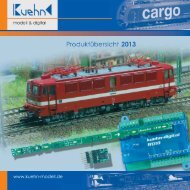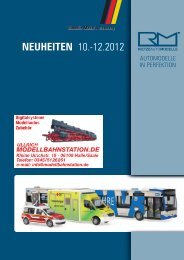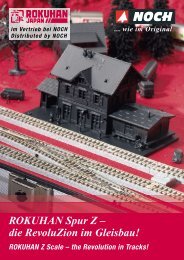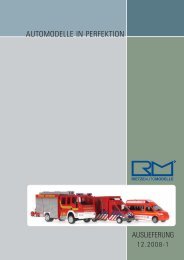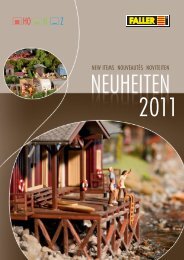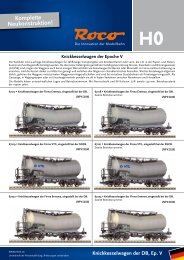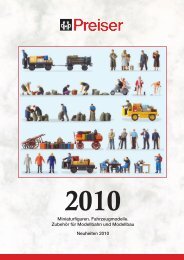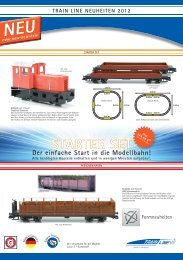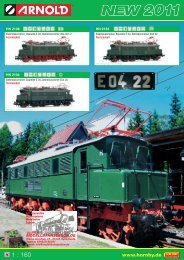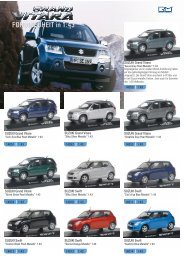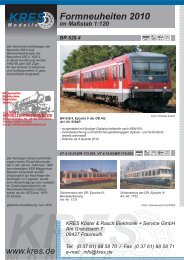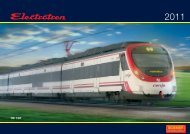Das Qdecoder Handbuch
Das Qdecoder Handbuch
Das Qdecoder Handbuch
Erfolgreiche ePaper selbst erstellen
Machen Sie aus Ihren PDF Publikationen ein blätterbares Flipbook mit unserer einzigartigen Google optimierten e-Paper Software.
The Netherlands<br />
3.6. DUTCH RAILWAY SIGNALS<br />
The fotos of this chapter on Dutch signalling are<br />
partly taken from www.nicospilt.com.<br />
3.6.1. Signalling SyStem 1946<br />
Netherlands rail<br />
started light signal<br />
experiments in 1923<br />
which resulted in the<br />
fi rst signalling system<br />
that base on light<br />
points only. It was<br />
established in 1949<br />
(but is called the 1946 system)<br />
and uses night aspects of classic<br />
semaphore signals.<br />
The signalling system distinguishes<br />
between three speed steps and stop.<br />
“High speed” is defi ned as 90 km/h or even<br />
higher depending on the distance between<br />
two signals and the braking distance of the<br />
train. “Medium speed” was defi ned to be<br />
in the range between 45 and 90 km/h and<br />
“low speed” was 45 km/h or lower.<br />
The basic signal has three lights one<br />
upon the other. Either of them can show<br />
white, green or yellow light, the lowest<br />
one can show red additionally. The upper<br />
light controls high speed, the middle one<br />
controls medium speed and the bottom<br />
one controls low speed.<br />
The signals give information on both the<br />
speed range at the signal itself and that<br />
one to be expected at the next signal. Thus<br />
it controls two sections of the line.<br />
In principle two light signals could be used<br />
in cases when high speed is never allowed<br />
but these P signals exist almost only in<br />
theory.<br />
The „P“ following signal fi gure mainshows<br />
typical announcing signals<br />
of the 1946 system: signal signals<br />
dwarf 88<br />
signal<br />
three<br />
lights<br />
signal<br />
single<br />
light<br />
signal<br />
On free tracks only one light was used<br />
in many cases. This single light does not<br />
give another speed information than high<br />
speed. To overcome this disadvantage<br />
fl ashing yellow aspects were introduced.<br />
aSpeCtS<br />
The three light signal are able to show<br />
10 different aspects, depending on speed<br />
information at the signal itself and the<br />
next one:<br />
this<br />
signal<br />
high<br />
speed<br />
medium<br />
speed<br />
low<br />
speed<br />
stop<br />
high<br />
speed<br />
NS signals<br />
next signal<br />
medium<br />
speed<br />
low<br />
speed<br />
stop<br />
Single light signals use two different<br />
kinds of fl ashing of the yellow light. Slow<br />
fl ashing informs about a short breaking<br />
distance. Withing the braking distance a<br />
signal can show stop, or the track where<br />
the train is going to has a dead end. Fast<br />
fl ashing yellow light claims very slow<br />
speed and careful driving. The track may<br />
be occupied or a movable signal may be<br />
present which can show stop.



